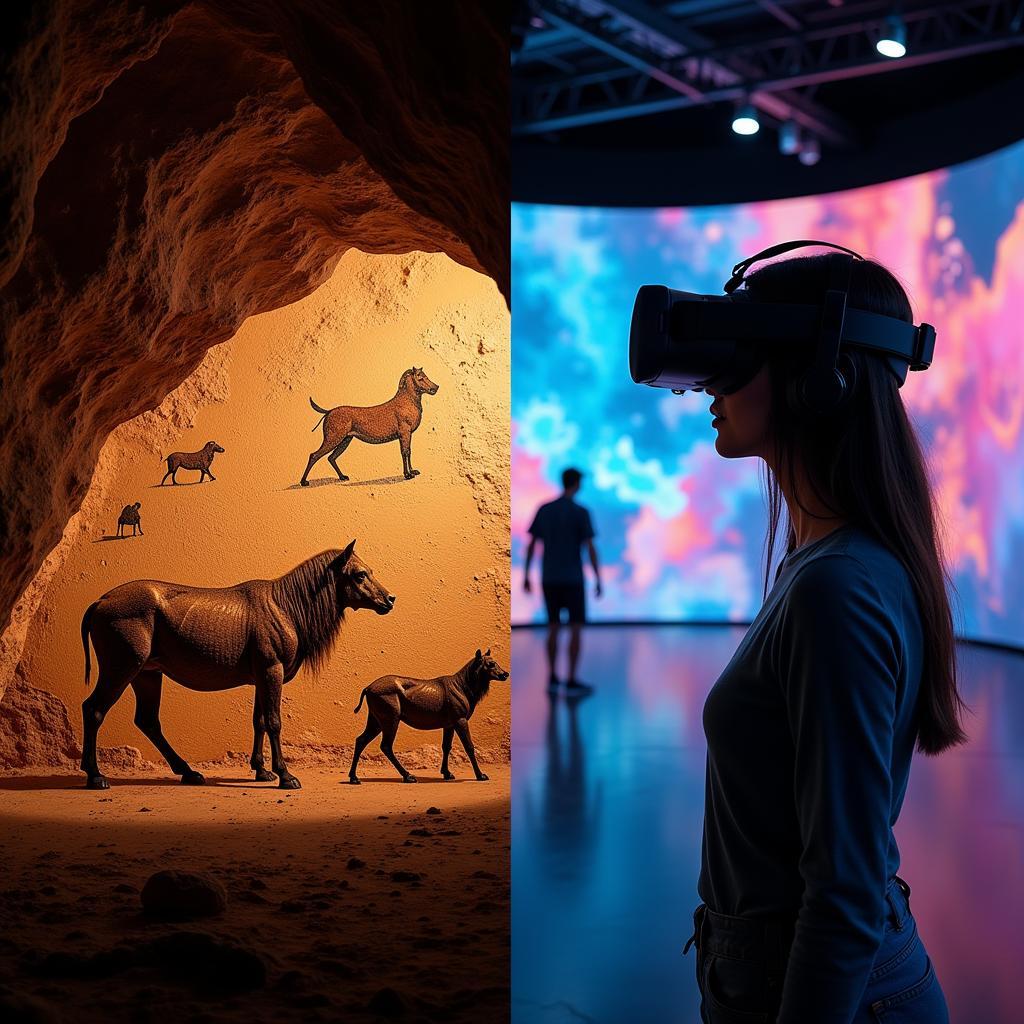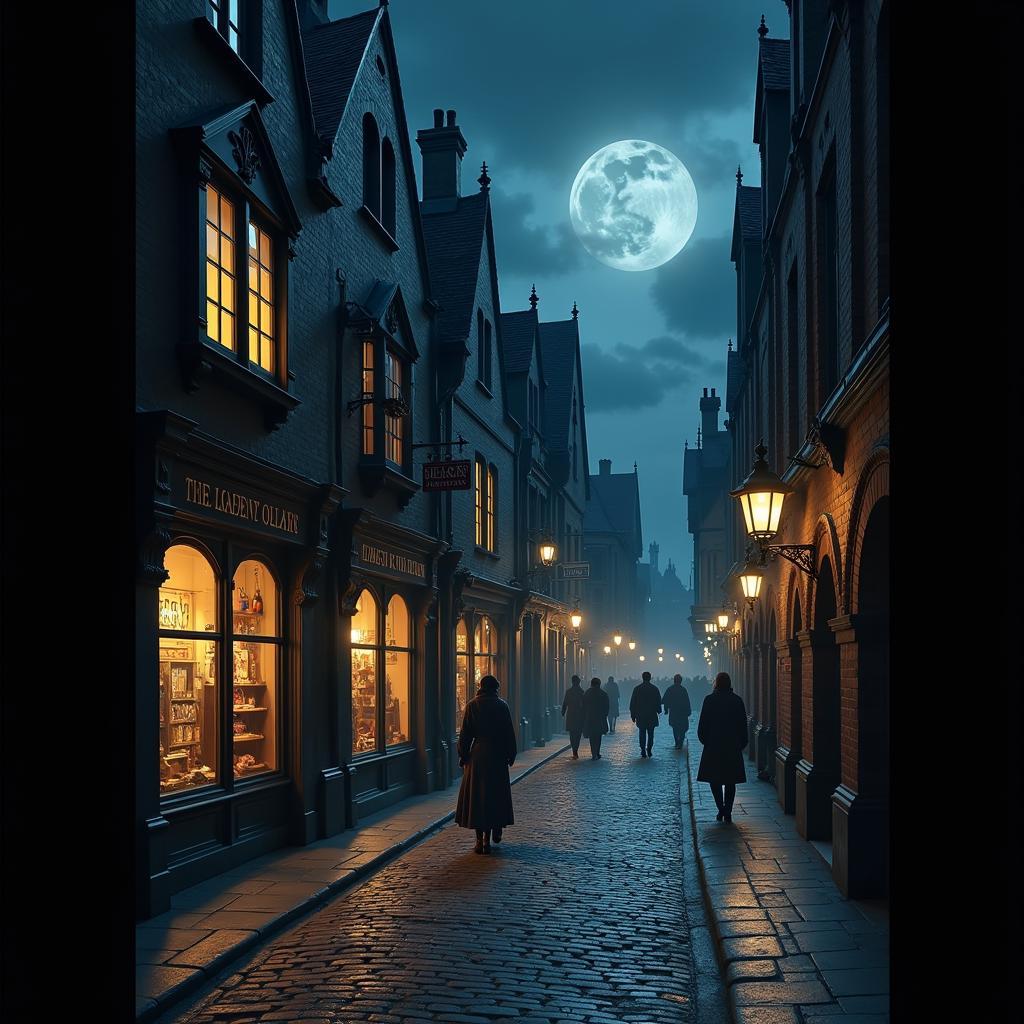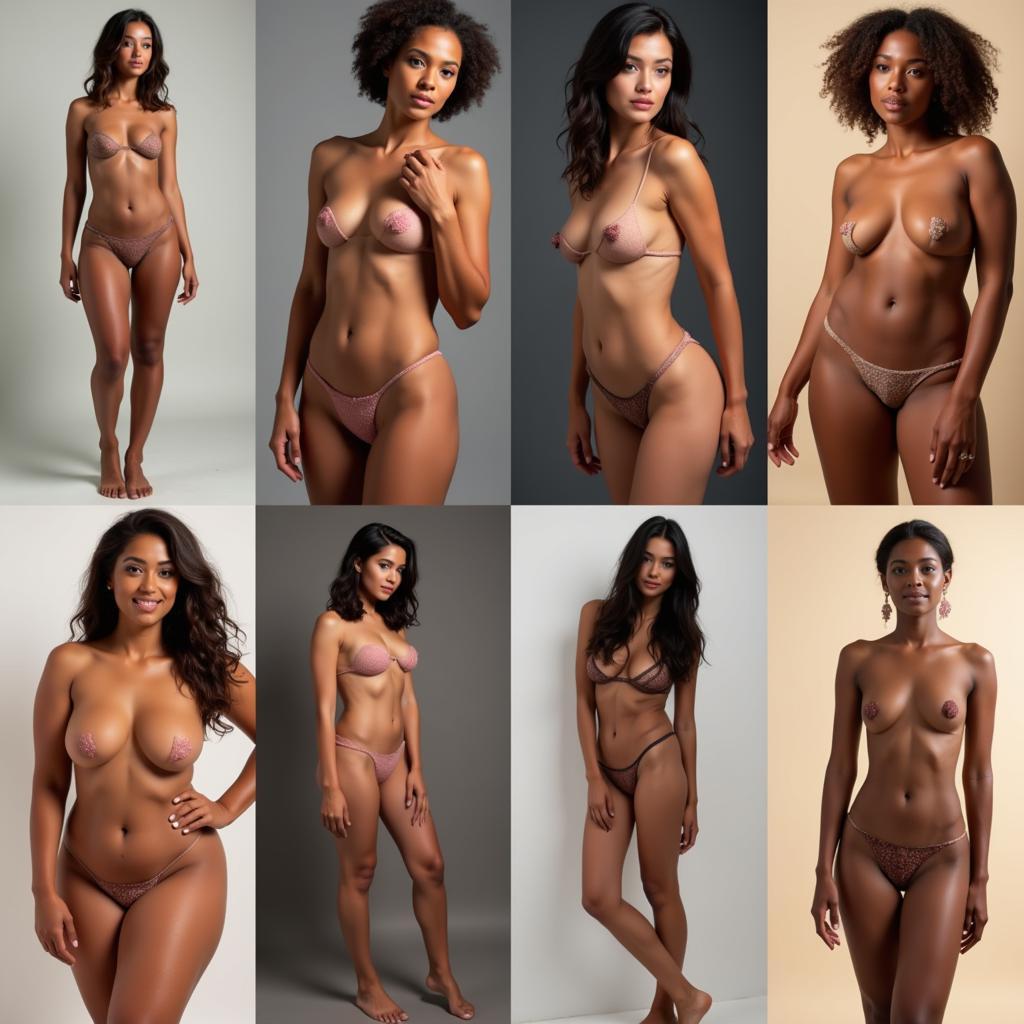Art Evolution: A Journey Through Time and Technology
From the evocative cave paintings of our ancestors to the immersive digital landscapes of today, art has been an ever-evolving reflection of humanity and its relationship with the world. The term “Art Evolution” encapsulates the continuous transformation of artistic expression, driven by technological advancements, cultural shifts, and a constant search for new ways to perceive and interact with our surroundings.
 Cave Painting to Virtual Reality
Cave Painting to Virtual Reality
The Dawn of Creativity: Prehistoric Art and Its Legacy
The earliest forms of art, found in caves scattered across the globe, offer a glimpse into the minds of our prehistoric ancestors. These paintings, etchings, and sculptures, often depicting animals, hunts, or rituals, served as a means of communication, storytelling, and connection to the spiritual realm. The tools were simple – natural pigments, charcoal, and stone – yet the impact is profound, demonstrating an innate human impulse for creative expression.
A Classical Foundation: Ancient Civilizations and the Rise of Aesthetics
With the rise of ancient civilizations like Greece, Rome, and Egypt came a refined sense of aesthetics and a focus on realism and idealism in art. Sculptures celebrated the human form in lifelike detail, while intricate mosaics and frescoes adorned the walls of temples and palaces. Messianic art from this era played a crucial role in shaping religious beliefs and cultural identity. These societies laid the groundwork for artistic principles that would influence generations to come.
A New Perspective: The Renaissance and the Birth of Perspective
The Renaissance marked a period of immense artistic and intellectual flourishing. Artists like Leonardo da Vinci and Michelangelo pushed the boundaries of realism, utilizing techniques like linear perspective and chiaroscuro to create a sense of depth and drama. The invention of the printing press democratized access to knowledge and artistic ideas, further accelerating the evolution of art.
Breaking with Tradition: Modern Art and the Search for New Expression
The late 19th and 20th centuries witnessed a dramatic shift in artistic paradigms. Movements like Impressionism, Cubism, and Abstract Expressionism challenged traditional notions of representation, experimenting with color, form, and abstraction to convey emotions, ideas, and subjective experiences. Artists like Vincent van Gogh, Pablo Picasso, and Jackson Pollock became pioneers of a new artistic language.
The Digital Canvas: Contemporary Art in the Technological Age
The advent of computers and digital technology ushered in a new era for art evolution. Artists embraced digital tools, incorporating photography, video, and software into their creative processes. The lines between art forms blurred, giving rise to multimedia installations, interactive art, and immersive virtual experiences.
Art Evolution: A Continuous Journey
Today, art continues to evolve at an unprecedented pace, fueled by advancements in artificial intelligence, virtual reality, and biotechnology. Artists like teamLab and Refik Anadol are pushing the boundaries of what art can be, creating immersive, interactive experiences that blur the lines between the physical and digital worlds.
The evolution of art is a testament to human creativity and our innate desire to express ourselves, connect with others, and make sense of the world around us. As technology continues to advance, we can only imagine what breathtaking forms of artistic expression await us on the horizon.


